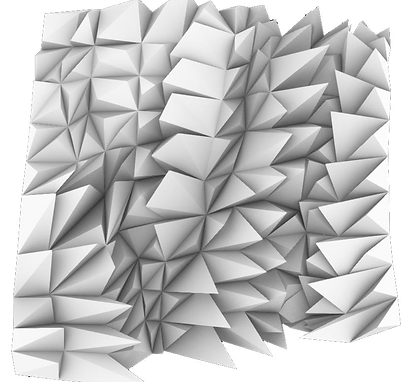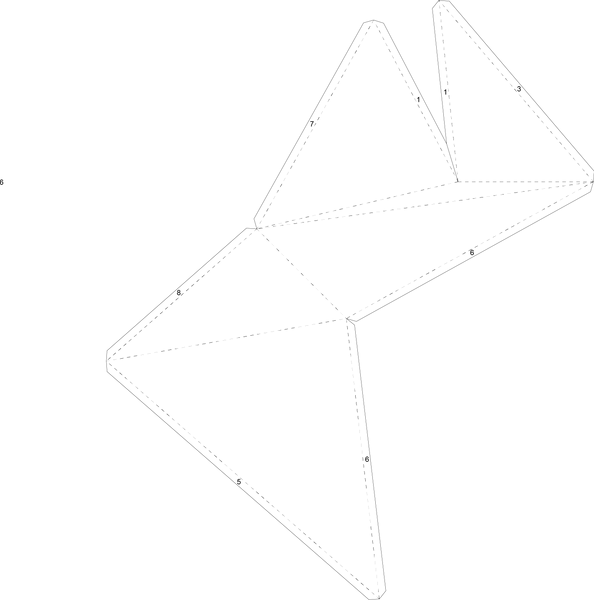
Module 3.
Pattern vs. Surface




Hybridisation - Top View

Artifact - Top View

Hybridisation - Oblique View

Artifact - Oblique View
Brief
In this module, we were given a drapery from a painting, and learnt to represent the features of the drapery by manipulating a pyramid grid based on a Tasmanian terrain. It is an imaginative and abstract way of representation. Throughout the module, we had our first attempt to practice digital modelling using rhino and explored the relationships between pattern and surface. Furthermore, we had our first glimpse into the principles of developability and digital fabrication.
Tasmanian landscape
The landscape assigned to me is part of the slope of a mountain, elevating diagonally from one corner to its opposite end. The concaving north-eastern corner accords with the curving corner of the fiber. However, there is a lowercase in the middle of the landscape, which is an inevitable problem when analyzing the cylindric property of the drapery.


The Drapery

The fiber chosen is part of the sleeve of Madonna, which curves in a cylindric manner into the painting on the upper right corner. There are four main creases on the sleeve, folding towards contrary directions. These are the characteristics that I decided to represent and exaggerate in the final artifact.

Hybridisation
I designed the hybrid to reflect the lightings and shadings of the fiber based on the positions of multiple draperies. Modulus were inlaid with the aim of creating an illusionary geometry above the physical surface.

Hybridisation - Top View

Hybridisation - Oblique View

Artifact
The artifact was created to exaggerate the general cylindric shape of Mother Madonna’s sleeve and the dominating folds on the surface. The shape of the assigned terrain of Tasmania was modified by referencing back to the drapery, and defines the boundaries of the artifact.

Artifact - Top View

Artifact - Oblique View
The Making Of A New Developable Surface
Panel 2


Panel 3
Panel 1

Panel 1

Panel 2
Panel 3


Panel 1
Panel 2
Panel 3



Unrolled Panels

Duccio Di Buoninsegna 2.0
In the composite stage, I took the plan view of the artifact and stretched the drapery towards the end of defining linework. Although the artifact has lost many of its vertical qualities when only planar view is captured, the new three-dimensional surface defined by the artifact, as well as the expansion of the drapery beneath, have make verticality conceivable. Because the artifact on the above layer was designed based on the two-dimensional drapery beneath, the overlapping of the two blends the dimension especially in the areas of folds, as if the three dimensional space was expanded from the planar surface. Combining the qualities of fibre and artifact, the composite acts as a media between the fiber and the artifact, as if the model is protruding into the three-dimensional space from a planar surface.

Reflection
In Architectural Geometry, Portmann defines developability as the geometry’s capacity to be built by foldable planar surfaces. The understanding of developability provides a reasonable analysis to the form of architecture as it allows the formation of construction without stretching or distorting the materials, and rationalize complex surfaces by breaking down curvatures into individual panels.
The knowledge was practice throughout the process of artifact construction, as I maintained the developability of the modulus as required. Thus, the works of the module can be regarded as an instruction of how to build the illustrated artifact from 2-D surfaces via folding.
With the aid of digital fabrication, the manipulation of the panels is refined to high levels of accuracy and preciseness. The emergence of digital fabrication also provides additional space for design innovation, for the modelling vividly shows every aspects of a three-dimensional creations. This shortens the distance between design ideas and final products beyond all doubt.